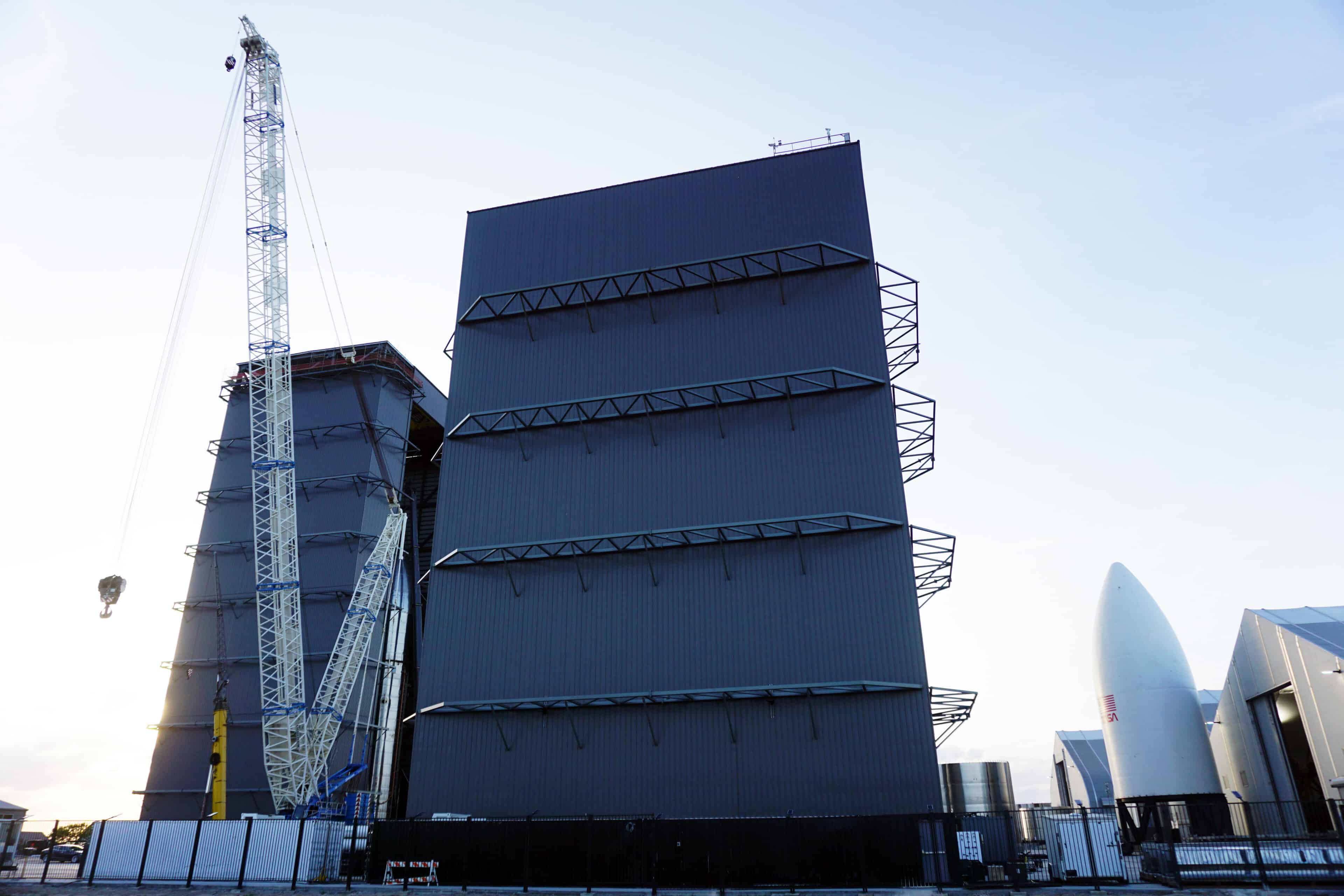
Even while the Federal Aviation Administration is taking a second look at SpaceX’s Boca Chica rocket building/testing operation to determine if it’s still within legally allowable parameters, the company’s founder and CEO Elon Musk is plunging ahead with accelerated development of SpaceX’s Starship Mars rocket.
To ramp up production and development even more, though, Musk needs more people beyond the 1,000 employees give or take now working on Starship at Boca Chica. On Tuesday, less than two hours after the Starship SN11 prototype blew up and deposited rocket parts around the launch site and vicinity near the end of an apparently otherwise successful flight test, Musk, who has 50.1 million Twitter followers, tweeted out a call for people to join him in South Texas.
“Please consider moving to Starbase or greater Brownsville/South Padre area in Texas & encourage friends to do so! SpaceX’s hiring needs for engineers, technicians, builders & essential support personnel of all kinds are growing rapidly,” he wrote.
Musk also predicted that Starbase, on the site of the current Boca Chica Village adjacent to the Starship production complex, “will grow by several people over the next year or two.”
The only problem is, where are they going to live?
Nick Mitchell-Bennett, executive director of Come Dream Come Build, formerly the Community Development Corporation of Brownsville, said Brownsville is already suffering from a housing shortage without thousands more descending on the area practically overnight.
“I would love for the guy to invest in kind of a house trust fund,” he said. “He’s telling people to come down here. We don’t have enough room for you right now.”
Mitchell-Bennett said he’s not opposed to the growth opportunity but that Brownsville and the area need to be smart about it and not repeat the mistakes of other cities that have experienced rapid growth.

After becoming home to Microsoft and Amazon, for instance, Seattle housing is out of reach for anyone making minimum wage — not that Brownsville is about to become Seattle, he said. Still, there are lessons to be learned.
“I don’t want people to stay poor, are you kidding me? But I don’t want people who have been here for generations to have to leave because they can’t afford to be here,” Mitchell-Bennett said. “It’s just kind of a scary thought. We’re at the point where we’re starting. We can look around the country and see all the mistakes that places have made, and let’s not make them.”
It’s not just about keeping Brownsville affordable for those who were already here, but about growing and prospering in a sustainable way — assuming SpaceX’s Boca Chica operations endure, grow and have a profound economic impact on the area. Dayton, Ohio, was once the Seattle of its day, Mitchell-Bennett noted.
“That’s where all the parts were made for all of the cars being done in Detroit,” he said. “That’s where the cash register was invented. That’s where the Wright brothers were.”

Today Dayton has fallen on hard times, listed as a “dying city” by Forbes magazine in 2012. It’s a story repeated throughout the country and throughout history. Brownsville was Western Division headquarters for Pan American World Airways until 1959. That’s gone. So is Pan Am, once the country’s largest international carrier, dissolved in 1991.
“I do think it’s a super, super good opportunity not to (mess) it up,” Mitchell-Bennett said. “There are so many examples of the way that it went right in some places and the way that it went wrong. Let’s make this last. We can do that. You can do it. You’ve just got to be smart about it.
“Let’s look at the places where this kind of thing has happened and not run into it like, oh this is fantastic. There are some bad things about it, and how do we mitigate them.”
Noting that Musk also tweeted that he intends to donate $10 million to the city of Brownsville for downtown revitalization, Mitchell-Bennett said that process must take place without supplanting every low-income downtown resident.
“You don’t want to make downtown so nobody making minimum wage or slightly above can live downtown,” he said. “That doesn’t make downtown cool.”
Why $10 million for downtown? Gilberto Salinas, who as former executive vice president of the Brownsville Economic Development Council took part in initial talks with Musk about SpaceX establishing a spaceport at Boca Chica, said a thriving downtown would help Musk attract the creative-class types he needs.
“When it comes to human capital and specifically talent for forward-thinking companies such as SpaceX, they usually tend to gravitate toward urban centers,” he said. “They like to be able to walk or bike to certain shops and eateries. In economic development, there’s certain cities employing strategies of solely investing in their downtowns to make them attractive for millennials and a high-performing workforce.”

Salinas, now executive director of the Kerrville Economic Development Corporation, said he had conversations with SpaceX about those types of amenities, once Brownsville went from dark horse to front runner.
“There’s a golden opportunity for Brownsville to make something happen,” he said. “The client is there, the money is there and the unique beauty of downtown is there as well.”
Can the city have it both ways in terms of embracing new growth while keeping housing affordable for everyone? Yes, in the form of residential projects whose business models feature a significant portion of affordable housing, Mitchell-Bennett said. In CDCB’s new subdivision, Palo Alto Groves, 25 percent of the homes will be for low-income residents, he said.
“We need to make sure that everyone’s included in this prosperity going forward and not just the same old characters,” Mitchell-Bennett said.





